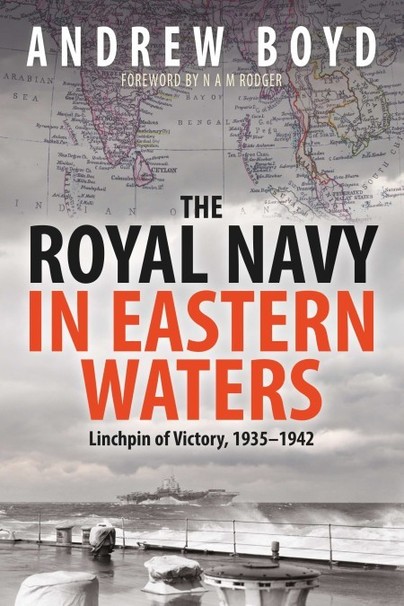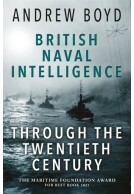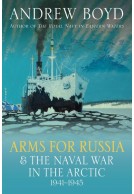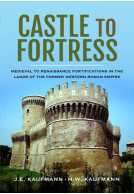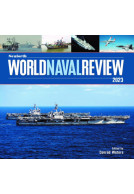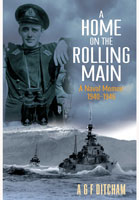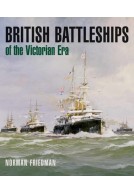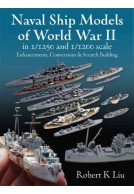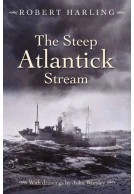The Royal Navy in Eastern Waters (Paperback)
Linchpin of Victory 1935-1942

Pages: 560
Illustrations: 25 illustrations & 4 maps
ISBN: 9781399096546
Published: 3rd November 2021
Top reviews
- 'Boyd demolishes the props of received opinion one by one. A book that not only challenges received opinion but convincingly refutes it.'
(Alan Judd, The Spectator – read the full review via www.spectator.co.uk)
- 'This is a very important book for our understanding of the Second World War and of the Royal Navy's part in it.'
(Norman Friedman, The Mariner's Mirror)
- 'For anyone with an interest in the Second World War, this book brings a new dimension of research and interpretation which combine to put it into the essential category. It is a superb work of historical analysis that I cannot recommend highly enough.’
(David Hobbs, Author)
- Mountbatten Maritime Award 2017 - Certificate of Merit
- Shortlisted for Society for Nautical Research Anderson Medal 2017
(click here for international delivery rates)
Need a currency converter? Check XE.com for live rates
| Other formats available | Price |
|---|---|
| The Royal Navy in Eastern Waters ePub (6.3 MB) Add to Basket | £12.00 |
THIS IS THE COMPELLING STORY of how the Royal Navy secured the strategic space from Egypt in the west to Australasia in the east through the first half of the Second World War. This contribution, made while Russia’s fate lay in the balance and before American economic power took effect, was critical. Without it, the war might have lasted longer and decisive victory proved impossible. After the protection of the Atlantic lifeline, it was the Royal Navy’s finest achievement – a linchpin of victory.
The book moves authoritatively between grand strategy, intelligence, accounts of specific operations, and technical assessment of ships and weapons. It challenges established perceptions of Royal Navy capability and performance and will change the way we think about Britain’s role in the first half of the war. It also emphasises that Britain was not acting alone in this period and it underlines the importance of the American relationship
to Britain’s eastern policy.
Andrew Boyd argues persuasively that it was the Admiralty, demonstrating a reckless disregard for risks, which was primarily responsible for the loss of Force Z in 1941, not Prime Minister Winston Churchill as traditionally suggested. However regrettable, this loss was not a sign of fundamental imperial failure but rather a temporary setback, eclipsed by Britain’s strategic success in securing what really mattered. He demonstrates how the Royal Navy recovered quickly – coming close to a British Midway off Ceylon against the Japanese in 1942.
Superbly researched and elegantly written, this book adds a hugely important dimension to our understanding of the war in the East.
‘This new account ought to startle the many comfortable ideas which have been dozing too long in their arm-chairs.’ N A M Rodger, author of A Naval History of Britain
Andrew Boyd, a former submariner has in this work of amazing ‘granularity’ examined in the greatest of detail the strategic journey of Britain in World War 2. In a clear narrative and quite objectively he takes a deeply researched view of ‘Grand Strategy’ and the ‘gap’ between the Mediterranean and Pacific seas and emphasises the importance of the Indian Ocean to the British and Allied war effort. In most histories the Indian Ocean (the gap) shrinks to the margins of the Mediterranean or the Pacific. This is a scholarly and authoritative work where the scope and depth of research undertaken embraces the various demands and challenges of the Middle East and Mediterranean in the context of the threat posed by Japan and the Pacific theatre which made control of the Indian Ocean a crucial factor in the war at sea during a global conflict. Many with an interest in the war at sea during WW2 will know of Force Z and its fate along with the attendant blame attached to Churchill. This work re-examines the strategic decisions in a chronological sequence and analyses the preparations for a two-hemisphere war, the securing of the Eastern Empire and its war potential after the fall of France, the readiness of the Royal Navy for war with Japan in 1941 and the defence of the Indian Ocean in 1942. In this fundamental re-assessment of the role of Britain’s eastern empire the contribution of the Royal Navy (and of particular note is his analysis of decisions concerning Force Z may make some rethink Churchills contribution to the decisions made?) to the strategy that tries to mitigate conflicting requirements in two-hemispheres, not only from an operational perspective but detailed consideration of Britain’s pre-war re-armament. Many will be surprised to read that British warship construction was greater than one is perhaps lead to believe by some histories on WW2. Warship construction exceeded losses (except for battleships) and this is but one factor of numerous others that ultimately allowed the Royal Navy to protect the Eastern Empire and generate maximum war effort despite losses such as Force Z, and other errors (cf; Singapore?) which although leaving the Royal Navy weaker in the Indian Ocean it was still able to deploy an effective Eastern Fleet.
Martin Willoughby, Wessex Branch WFA
This is a very coherent work demonstrating that Britain did have a grand strategy, that preparations for war were started earlier than many think and that after protecting the Atlantic lifeline defence of the Indian Ocean was the Royal Navy’s greatest achievement with many accepted truths re-examined and found wanting!
To quote the eminent naval historian the late Professor Eric Grove “Dr Boyd has proved his mettle as a naval historian of the first rank”. A valuable and worthy addition to the library of those with more than a passing interest in naval history of World War 2, highly recommended!
Demonstrates a mastery of detail, incisive analysis and fresh thinking, which overturns accepted wisdom on a major aspect of the Second World War.
Professor Andrew Lambert
One of the most important books on 20th-century naval history yet published. Groundbreaking and original analysis that changes our understanding of British naval policy in the late 1930s and the early years of the Second World War. Dr Boyd has proved his mettle as naval historian of the first rank.
Professor Eric Grove
This new account ought to startle the many comfortable ideas which have been dozing too long in their arm-chairs.
Professor N A M Rodger
Absolutely essential reading if the period is to be properly understood and earlier, less well informed, prejudices countered with it. Dr Boyd has proved his mettle as a naval historian of the first rank, something worthy of clear recognition in your distinguished pages.
The Naval Review, volume 106, number 3, August 2018 (Letters to the Editor) - by Eric Grove
Boyd takes on many tired, established narratives and gives them a meticulously researched, carefully argued and highly readable shaking.
International Journal of Maritime History, May 2018: reviewed by Tim Benbow - King’s College London, UK.
This book is a history game-changer in putting the Indian Ocean at the centre of Britain’s war strategy as it evolved from 1939 to 1942. It is well-written and well researched: there are 85 pages of footnotes and the bibliography extends to 27 pages. For a serious academic book it is also extraordinarily good value for money at only £30.00, and Seaforth are to be congratulated on making Boyd’s thesis available to a wider public.
Warship annual, 2018 - reviewed by John Jordan
The author has put in considerable time and effort to produce this highly detailed volume and
Military Archive Research
his research has been extensive. One should realise this and congratulate him on this
achievement.
Much has been written about the Naval campaigns in the Atlantic, Mediterranean and Pacific theatres of the Second World War. However, much less has been written about the war in the Indian Ocean, and Andrew Boyd fills this gap.
Marine News
This is an important new study in which technical detail, intelligence and individual actions are incorporated into an overall strategic account that is likely to change the hitherto accepted interpretation of these crucial periods of the war.
Very highly recommended.
This book must be on the shelves of anyone interested in the history of the 20th-Century RN. It is a substantial work in every way.
Navy News – reviewed by Eric Grove
Few people will deny that the loss of the capital ships Repulse and Prince of Wales in December 1941 was a naval disaster. However, this new in-depth look at the Royal Navy in Eastern Water argues that it was the admiralty, demonstrating a reckless disregard for risks, which was primarily responsible for the loss of Force Z in 1941, not Prime Minister Winston Churchill, as has been usually suggested.
Ships Monthly, December 2017
Boyd challenges many previously established writings about the naval war in the Far East, very highly recommended.
Scuttlebutt Edition 55
The extensive evidence marshalled is compelling and future scholars will have to take note of this reconceptualization. This book is recommended for specialist naval historians as well as general readers interested in the Second World War at sea.
The Northern Mariner, July 2017 - reviewed by Corbin Williamson, Prattville, Alabama
Rodger notes that “this new account ought to startle the many comfortable ideas which have been doxing too long in the arm-chairs” and I would agree that Boyd’s work is a challenge to long held “truths”. It certainly achieved its aims with me in many areas and the prodigious amount of research present in the book does saves a lot of additional research for the reader while at the same time encouraging the reader to research more.
Thomo's Hole - reviewed by Ian Thompson
Well Recommended.
Read the complete review here.
This book has valuable information and insights despite those few areas in which one might disagree, and so I recommend it to anyone interested in this often overlooked subject.
1260scale.com
For anyone with an interest in the Second World War, this book brings a new dimension of research and interpretation which combine to put it into the essential category. It is a superb work of historical analysis that I cannot recommend highly enough.
Review by David Hobbs
Boyd shows that most of the air enthusiasts’ arguments about Force Z and the primacy of air power over sea power in 1941 are based on bogus history. I doubt many of them will read this book, but they should be forced to do so. It is time for Boyd’s more realistic view of this history to be accepted.
Mariner’s Mirror August 2017 – reviewed by Norman Friedman
Author article on The Tragedy of Force Z as featured in
History Today, September 2017
The publisher’s jacket notes tell us that this is the “compelling story of how the RN secured the strategic space from Egypt in the west to Australasia in the east through the first half of WWII”. Traditionally, we think of the naval war in the Mediterranean Sea and the naval war in the West and South-West Pacific without thinking much about the vast space of the Indian Ocean in between. That is apart from Adm. Nagumo’s foray in early 1942. What this book sets out to do is to dispel the myths that Britain had no clear idea of the importance of that ocean and how to secure it as the launching point for what was seen as an inevitable war with Japan, that is before the other Axis enemies, Germany and Italy, took on an earlier priority.
Review by John Francis MA (Maritime History)
In doing this, the book moves through various aspects: political considerations, strategic considerations, tactics, intelligence and the ships and aircraft of both sides. Andrew Boyd, a former RN submariner and later a civil servant at the Foreign Office but currently an academic at the University of Buckingham, covers all of these aspects with authority and his conclusions will certainly cause many raised eyebrows. Or as Nicholas Rodger, in his Foreword says “this is a book which ought to startle the many comfortable ideas which have been dozing too long in their armchairs”.
One particular area in which the author takes to task the long accepted and previously unchallenged wisdom that it was Churchill who insisted on HMS Prince of Wales and HMS Repulse being sent to Singapore to deter the Japanese from moving south from Indo-China rather than the Admiralty. The author explains how this came about as a result of increasing involvement by the USN in escorting Atlantic convoys, which in turn allowed the Admiralty to attempt to deter Japan by reinforcing the neglected (up to that time) Indian Ocean.
The book is therefore an important re-evaluation of what the Government in general and the Admiralty in particular did in this sector, albeit that due to the initial superiority of the Japanese when they attacked it resulted in both the loss of Force Z and later HMS Hermes and two cruisers in the area south of Ceylon. However the author’s research also dispels the myths that the Admiralty totally underestimated the IJN’s ships, aircraft and capability. Whilst Britain’s inter-service Joint Intelligence Committee (itself a novel idea!) did get some things wrong in their Appreciations (e.g. size of guns fitted to IJN’s Mogami class cruisers) they were broadly right on most things and had a much better idea of the Zero fighter’s capabilities than the US, despite General Chenault’s warnings. Where it all went wrong was in the speed of the Japanese simultaneous advance into SE Asia and the Western Pacific.
One particular feature of the presentation is the brief summary of content at the start of each chapter. This is especially useful where some of the chapters go into a considerable amount of detail with a consequent distraction from the main thrust of the content, even allowing for the 84 pages of End Notes.
However if the book does have one weakness, it is that there appears to be more concentration on committee meetings, reports and policy to the detriment of the battles once war overtook the area. Possibly other works have concentrated on the action rather than the talking, but even so, the author has indicated in the subtitle that he sees the RN’s involvement as being the “Linchpin of Victory 1935-42”. It is not clear whether the USN quite saw it in the same light. Certainly the author does make some rather fanciful claims about what the RN in general and the FAA in particular MIGHT have done “if luck had been on their side”, as it was for the USN at Midway. A full-on Indian Ocean carrier battle would make an interesting “what if” book for the future.
However this is a small point in a monumental work and one that, as Nicholas Rodger has said, will certainly shake up some long-established ideas.
This new work tells the compelling story of how the Royal Navy secured the strategic space from Egypt in the west to Australasia in the East through the first half of the Second World war; it explains why this contribution, made while Russia's fate remained in the balance and before American economic power took effect, was so critical.
Warship World, July/August 2017
The book is illustrated with a selection of thirty black and white photographs that excellently complement the text.
Robert Griffiths, Seaweed
Read the full review here.
I consider myself to be a reasonably well read amateur historian of both the Royal Navy and WW2. This book has definitely added to my knowledge, providing an in depth context to the Force Z disaster, as well as the RN's near disaster during the Japanese Indian Ocean Raid four months later. But the book is a hard read as it slowly - sometimes very slowly - describes the evolution of British government and RN strategic thinking and plans in regards to the defense of the Eastern Empire from the mid-1930's to 1941/2. Despite the author's attempt to differentiate the chapters, I would slog through 30 pages and wonder if I had repeated the previous 30. Nevertheless, Andrew Boyd has added an invaluable contribution to a field that I thought had long been saturated. I found particularly interesting his strong argument that the RN was much better prepared for WW2 in terms of both material and planning than has been the general consensus since the 1950's, and indeed could not have done much more given the pace of technological change and the many uncertainties that it was faced with in the late 1930's.
Amazon, Tony617
5* Superbly researched and well written.
Amazon Customer
Exciting new research into the difficult strategic choices facing the Royal Navy in the Far East. A fascinating insight into how the Royal Navy recognised and dealt with the risks posed by the Axis powers had they gained control of the Indian Ocean and Middle East oil and the impact that would have had on the outcome of World War II.
5* This is honestly one of the best books I have ever read!
Amazon, Nishant
Thoroughly recommended. This book will be essential for military historians with an interest in the naval campaigns of World War II, but non-academics will also appreciate its clear, lucid style, its elegant language, and its fascinating conclusions. Andrew Boyd writes with detachment, but he clearly feels passionately about the misinterpretation of the Royal Navy's efforts in the eastern waters. Britain's contribution in this theatre of the war has been generally overshadowed by the loss of Force Z, the task force that was supposed to bolster the defences of Singapore, and by America's victories in the Pacific, notably at the Battle of Midway in 1942, but Boyd successfully places these successes in the context of a grand strategy in which the Royal Navy played its full part. He relates technical detail, intelligence and individual actions to an overall strategic account that is likely to change the accepted interpretation of these crucial period of the war.
Amazon, J A Taylor
If you thought you understood the shape of the arc of Britains's decline as a global power between 1935 and 1945 then read this book and think again. It's a compelling account of a wartime British naval strength and reach which upends the comfortable notion that the loss of Singapore and the sinking of the Prince of Wales and Repulse in late 1941 reduced Britain to a toothless power in the Eastern theatre. Try the book's remarkable tables which total the warships commissioned by the main naval powers from the 1920s to the 1940s, though today's British Admirals should probably best look away.
Amazon, Arthur Gray
This is an important book that does justice to parts of WWII that have been largely forgotten. The Royal Navy in Eastern Waters played a critical role in the steps to eventual victory over the Axis countries. – Very Highly Recommended.
Firetrench
Read the full review here.
In addition to its focus on eastern waters, this book clarifies Allied strategy in operations across the globe and the scale of Boyd’s research can be gathered from the 27 pages of bibliography and 84 pages of end-notes that follow the 409 pages of text. For anyone with an interest in the Second World War, this book brings a new dimension of research and interpretation which combine to put it into the essential category. I would also put it into that category for anyone with an interest in the strategic planning of modern defence alliances and the co-ordination of coalition operations in the twenty-first century. It is a superb work of historical analysis that I cannot recommend highly enough.
Australian Naval Institute, David Hobbs
Read the full review here.
This is a fascinating book which ends in 1942 on the basis that there was no longer a credible threat in the Indian Ocean. What Boyd puts forward, successfully to my mind, is that despite some well publicised losses the RN achieved a vital strategic victory in keeping the Indian Ocean sea routes protected. This is a comprehensive and well argued book which successfully challenges many of the previously established writings about the naval war in the Far East. Very highly recommended.
Scuttlebutt
This volume is not ‘light’ reading in the accepted sense of that phrase. It is a ‘Learned Treatise’ on a specific subject and as such is probably most suited to university-level research. Researchers interested in British foreign and naval polices concerning the Japanese and the ‘British Far East’ may find it of interest, as might naval historians and those interested in British naval tactics in World War II. University and Public libraries may well find it a useful reference item for their political science or military history sections. The small number of photographs the volume contains may also be of use to modellers, war-gamers or those interested in the Royal Navy, the Fleet Air Arm, the Imperial Japanese Navy or World War II.
NZ Crown Mines
About Andrew Boyd
ANDREW BOYD CMG, OBE, DPhil was educated at Britannia Royal Naval College and St Johns College, Oxford. He served as a submariner in the Royal Navy before joining the Foreign & Commonwealth Office in 1980. He has had a long standing interest in 20th-century naval history and was awarded a research fellowship to undertake a DPhil. This was the basis of his first book, The Royal Navy in Eastern Waters, which was followed by the critically-acclaimed British Naval Intelligence through the Twentieth Century. His most recent book, Arms for Russia and the Naval War in the Arctic 1941–1945, is a fascinating reassessment of Allied support for the Soviets.







